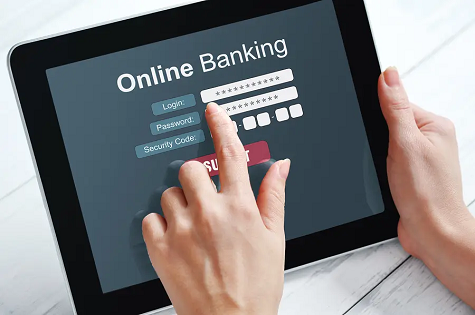Section 4-6: Online Banking
Section 4-6: Online Banking
Overview

 Online banking, also known as internet banking or e-banking, refers to the digital platform provided by banks and financial institutions that allows customers to perform various banking transactions and services over the internet. Here's an overview of online banking:
Online banking, also known as internet banking or e-banking, refers to the digital platform provided by banks and financial institutions that allows customers to perform various banking transactions and services over the internet. Here's an overview of online banking:
Features and Services:
Account Management: Online banking provides customers with access to their bank accounts 24/7. Customers can view their account balances, transaction history, and account statements online.
Transfers: Customers can transfer funds between their own accounts (e.g., checking to savings) or to other accounts within the same bank. Some banks also allow customers to make external transfers to accounts at different financial institutions.
Bill Payment: Online banking enables customers to pay bills electronically. Customers can set up one-time or recurring payments for utilities, credit cards, loans, and other bills directly from their bank account.
Mobile Banking: Many banks offer mobile banking apps that allow customers to access their accounts and perform banking tasks on their smartphones or tablets. Mobile banking apps typically offer the same features as online banking, including account management, transfers, bill payment, and mobile deposit.
Alerts and Notifications: Online banking platforms often allow customers to set up alerts and notifications for account activity. Customers can receive alerts for low balances, large transactions, upcoming bill due dates, and other account-related events via email or text message.
Check Deposit: Some online banking platforms allow customers to deposit checks remotely using their smartphone or computer camera. This feature, known as mobile check deposit or remote deposit capture, enables customers to deposit checks without visiting a bank branch or ATM.
Account Services: Online banking platforms may offer additional services, such as account opening, account management (e.g., updating contact information), ordering checks, and requesting stop payments.
Benefits:
Convenience: Online banking provides customers with convenient access to their accounts and banking services from anywhere with an internet connection.
Time Savings: Customers can perform banking transactions and services online without having to visit a bank branch, saving time and effort.
Accessibility: Online banking is available 24/7, allowing customers to manage their finances on their own schedule, even outside of traditional banking hours.
Security: Banks implement various security measures to protect customers' online banking accounts, such as encryption, multi-factor authentication, and fraud monitoring.
Considerations:
Security Awareness: Customers should be vigilant about protecting their online banking credentials and personal information. This includes using strong, unique passwords, avoiding public Wi-Fi networks when accessing online banking, and being cautious of phishing attempts and fraudulent emails.
Technical Support: Banks typically offer customer support services for online banking users, including assistance with account access, troubleshooting, and resolving technical issues.
Overall, online banking provides customers with convenient, secure, and accessible tools for managing their finances and conducting banking transactions from the comfort of their home or on the go. By leveraging the features and services offered by online banking platforms, customers can streamline their banking experience and stay on top of their financial goals.
Videos (Click on Image to View Videos)
Online Textbook Read Section 4-6: (Online Banking)
